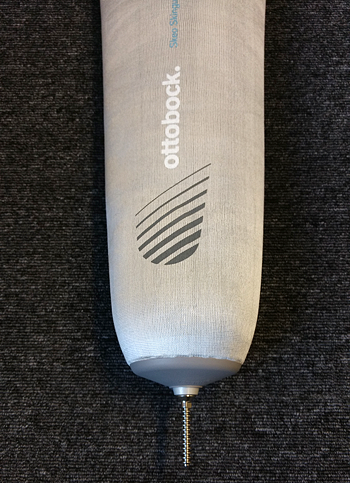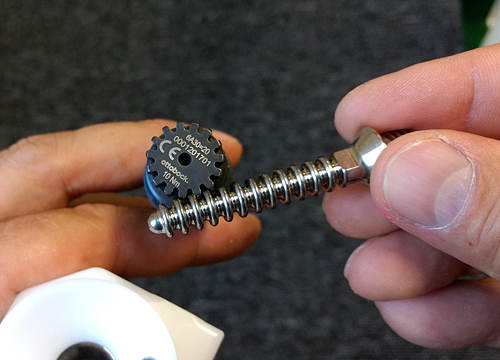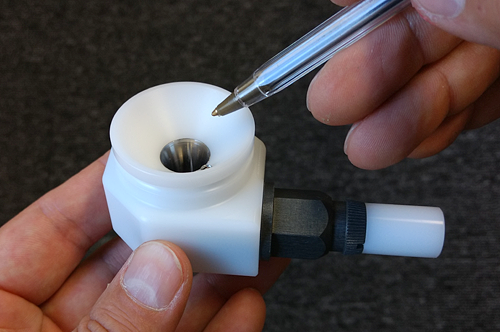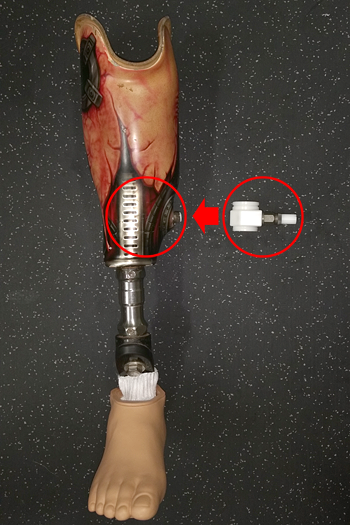This system was introduced into the practice many years ago, and currently it is one of the most common fixation method (in combination with liners) in lower limb prosthetics. The biggest advantages of the method are its simplicity, reliability (mechanical connection) and compatibility with large variety of liners (silicon, polyurethane, polystyrene, different profiles etc.) and socket designs.

The photo above shows a liner with the pin.
In addition to the design of the socket and liner, quality of the lock is important. There are several constructions available, however in our practice we commonly use clutch locks as the most functional devices.
A clutch lock has smooth stepless fixation and allows prosthesis wearer to actively pull their stump into the socket if required. To take prosthesis off, amputee needs to simply press a button.

The photo above shows an imitation of how the lock mechanism steplessly comes in contact with the pin (and holds it) by means of the gear rotating only in one direction due to the work of the overrunning clutch.
Because of asymmetrical shape of the socket and the stump, during getting in, the direction of the pin might change and hinder the donning. A proper profile of the upper funnel-shaped surface of the lock significantly simplifies this process.

The photo above demonstrates a quality lock with the proper shape of the upper surface (pointed by pen).

The photo above shows the position of the lock in the socket.
The video above shows the donning of the prosthesis with liner and clutch lock.
As all prosthetic components, an installation of the liner and pin lock must be considered in accordance with individual’s needs, indications and contraindications.
Information provided in this article is given for familiarisation only, please read disclaimer. We strongly recommend that you discuss your personal situation with your health professionals.

